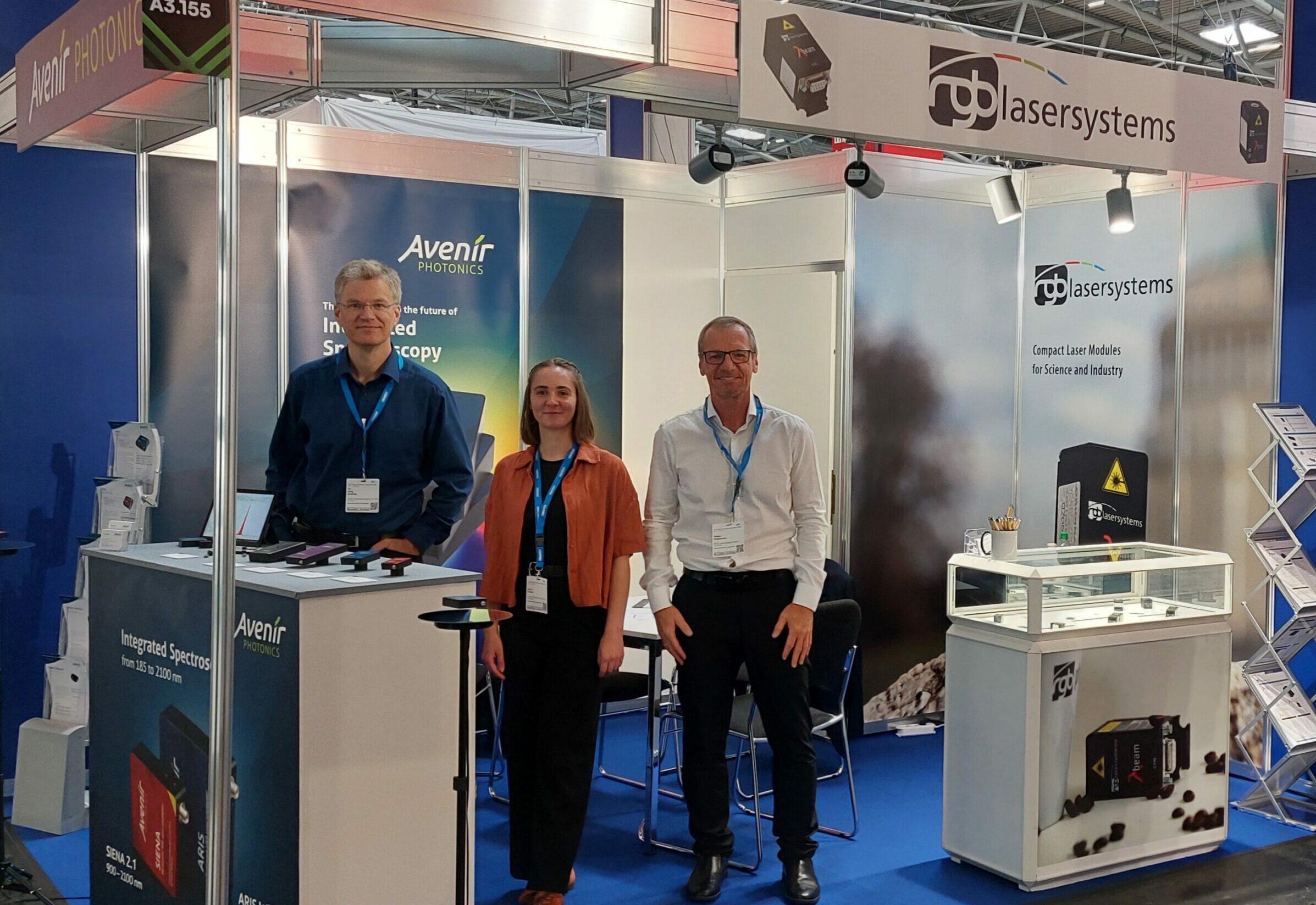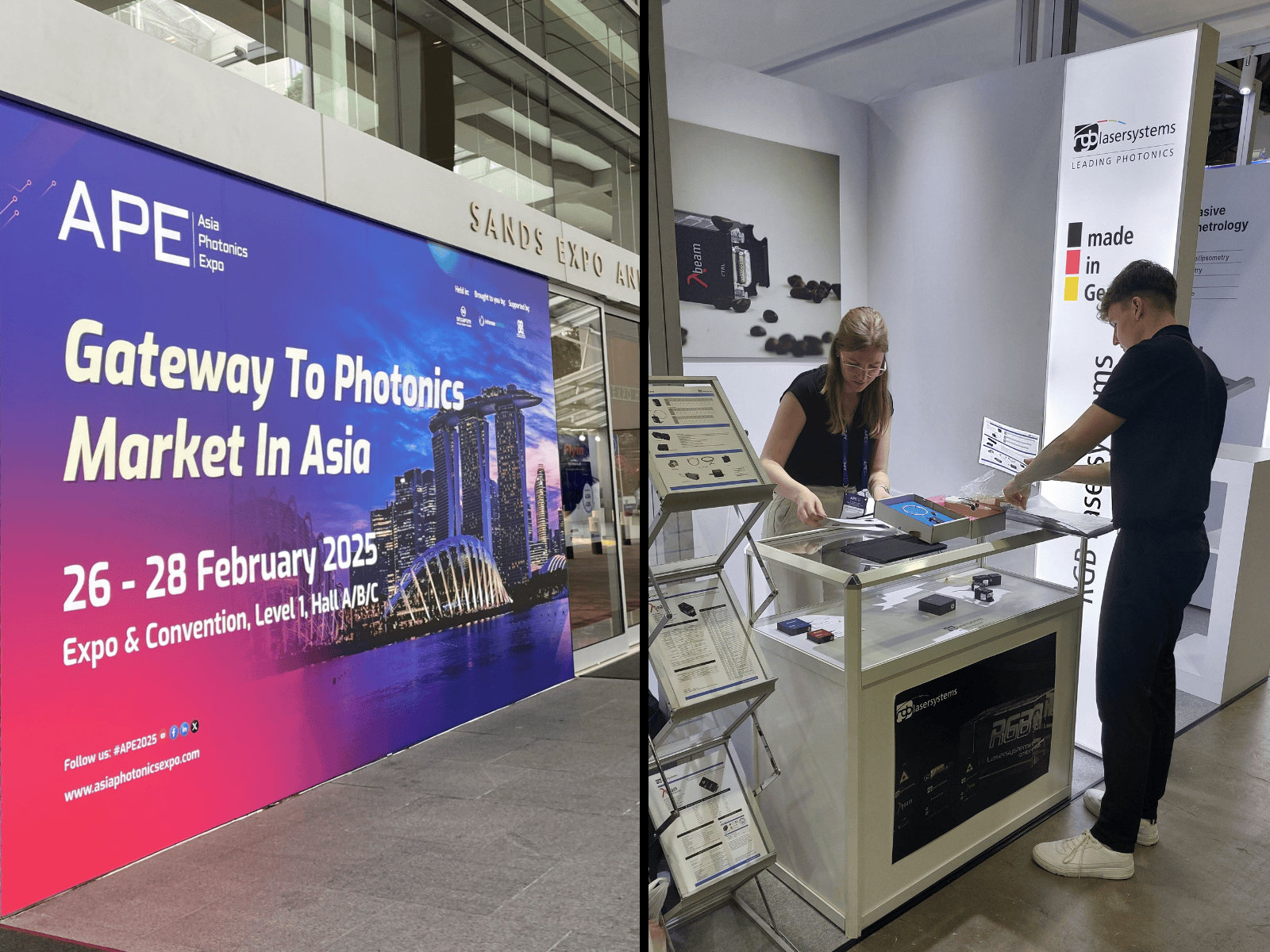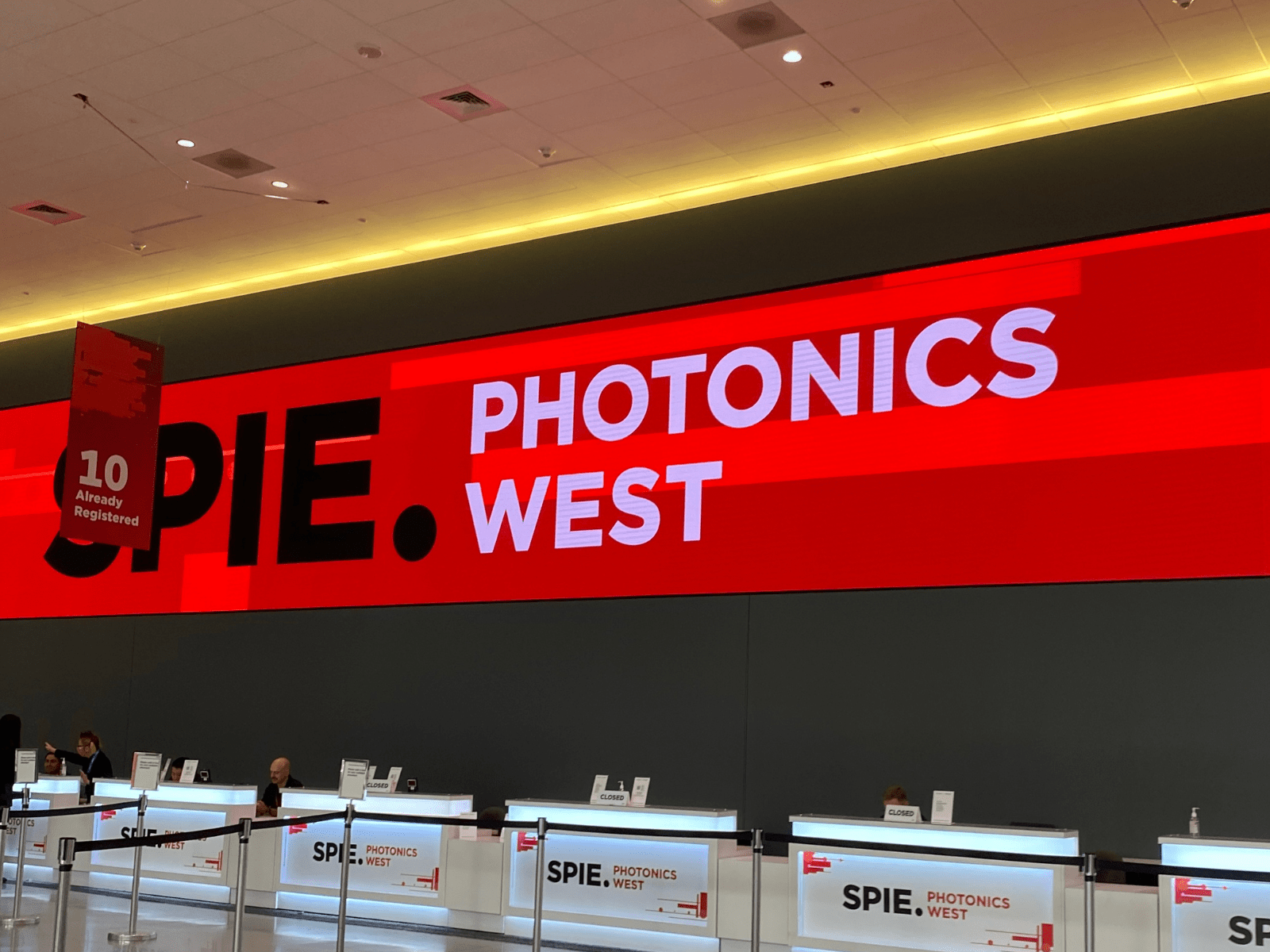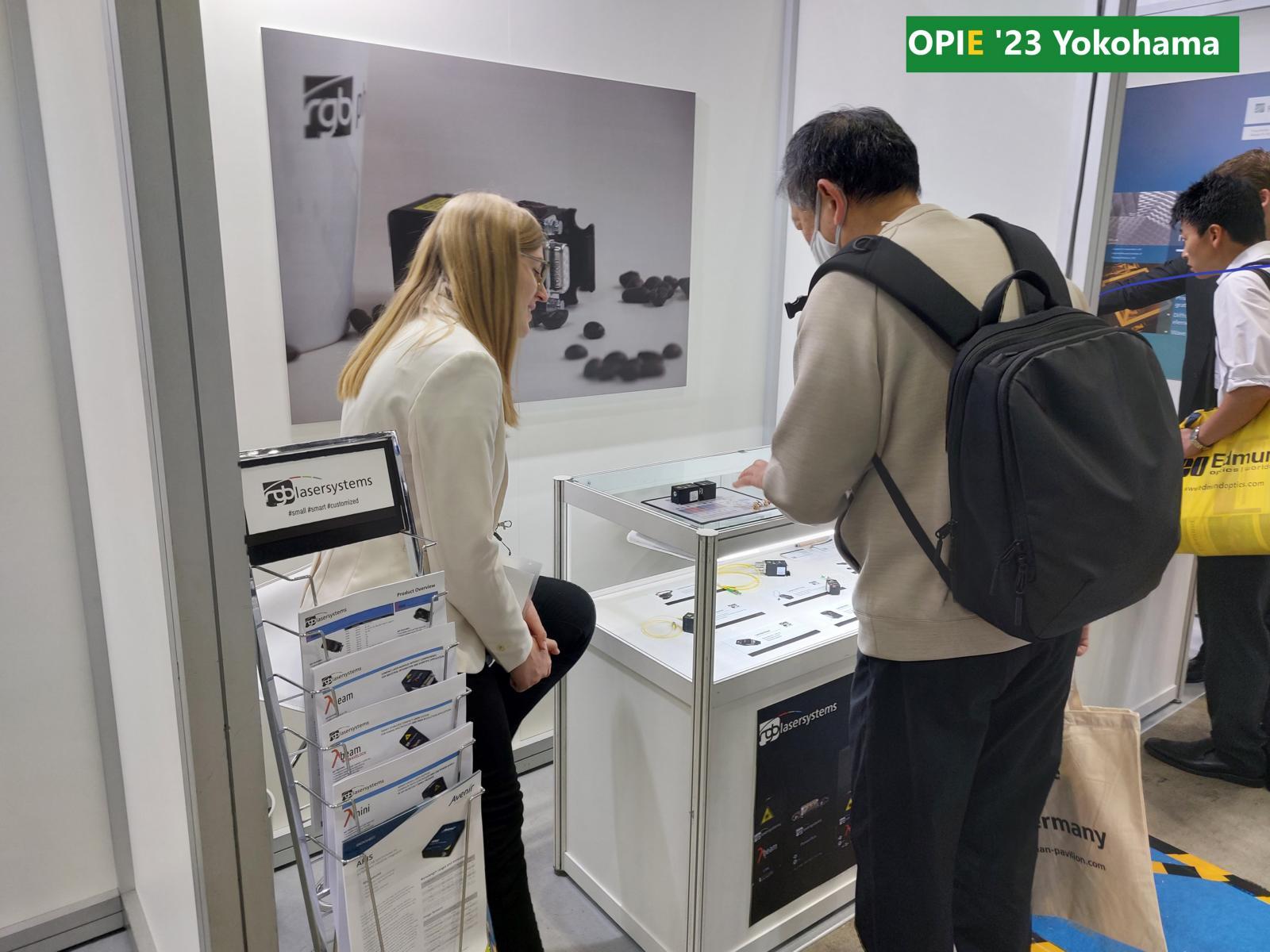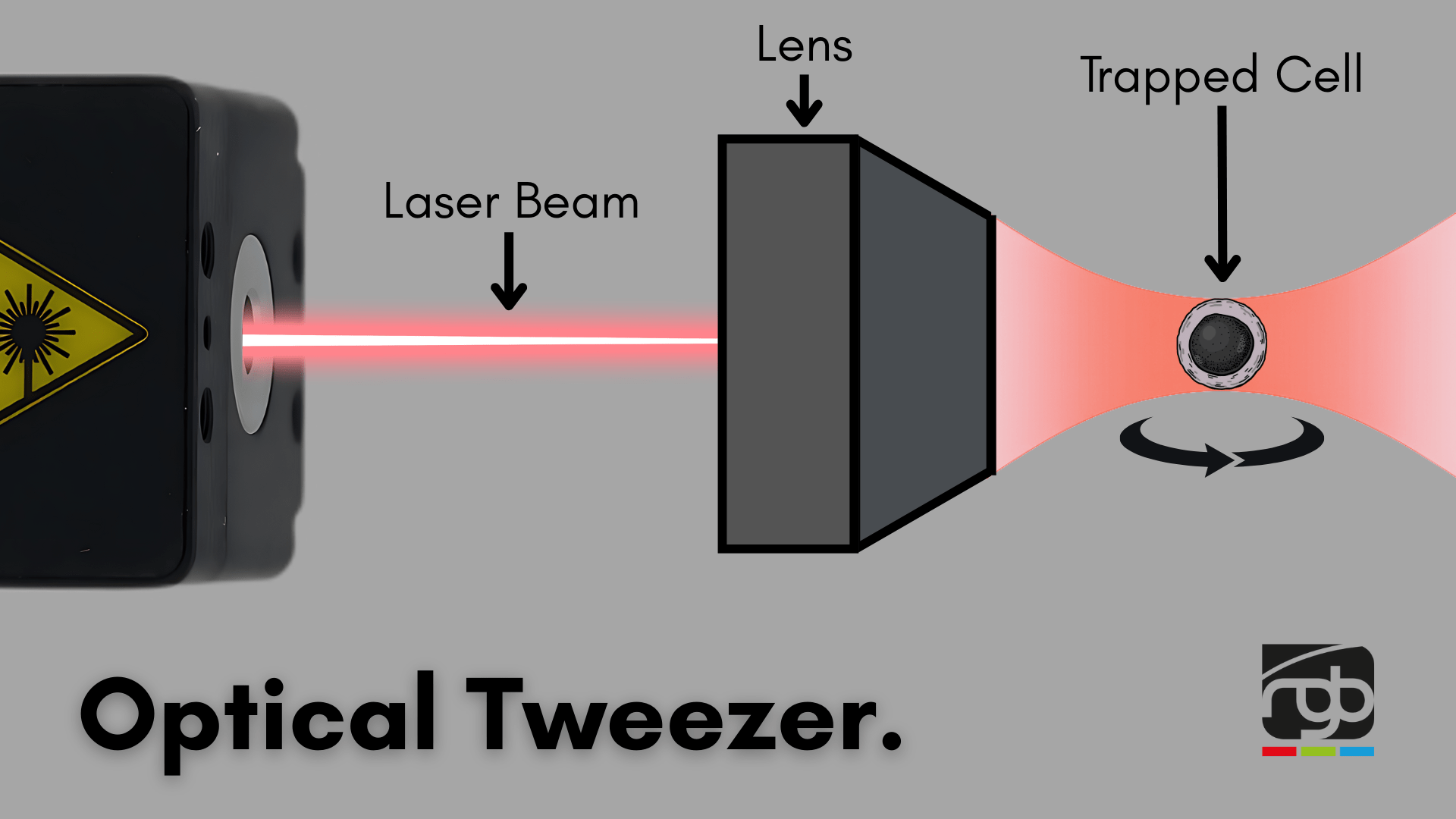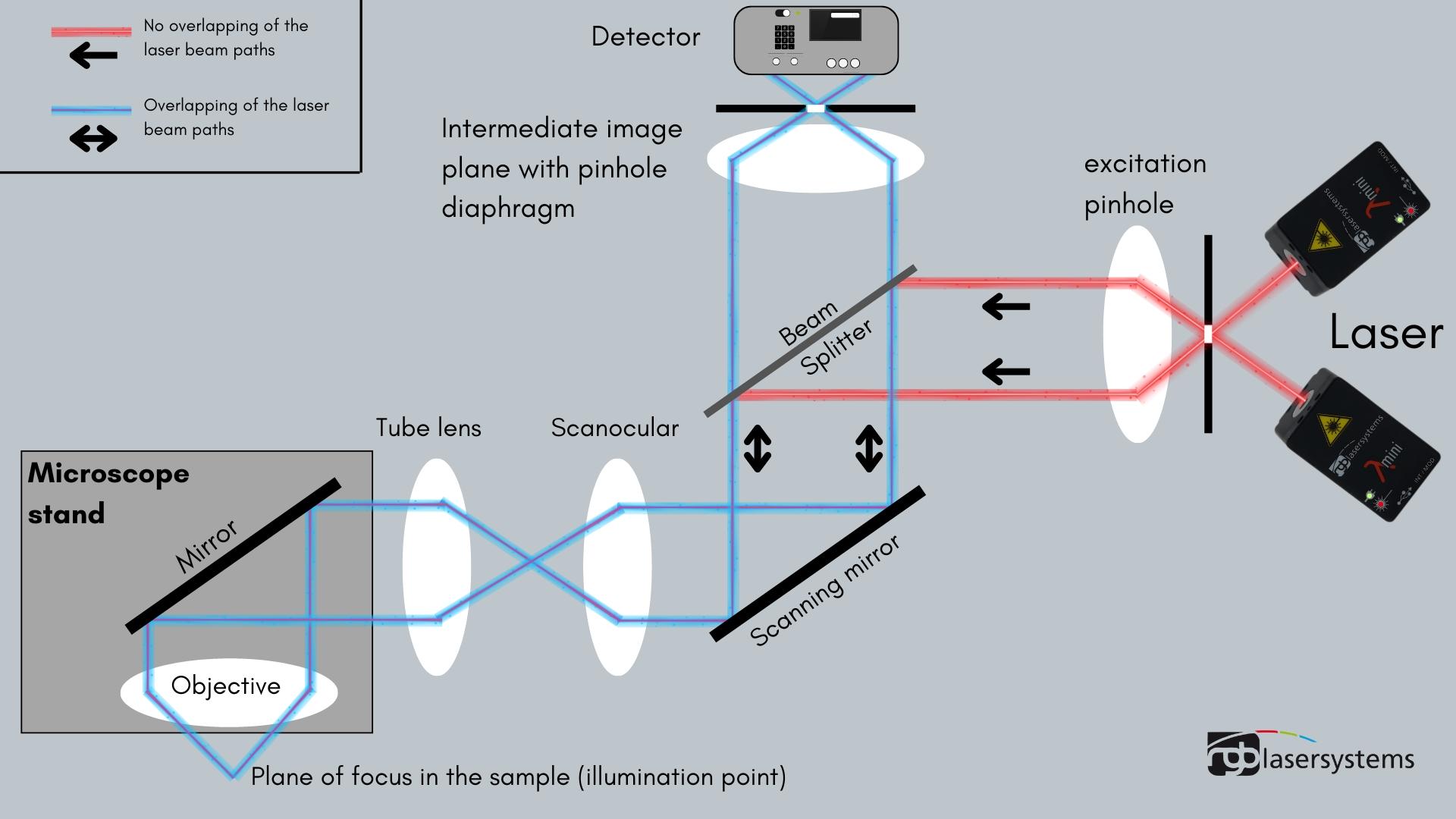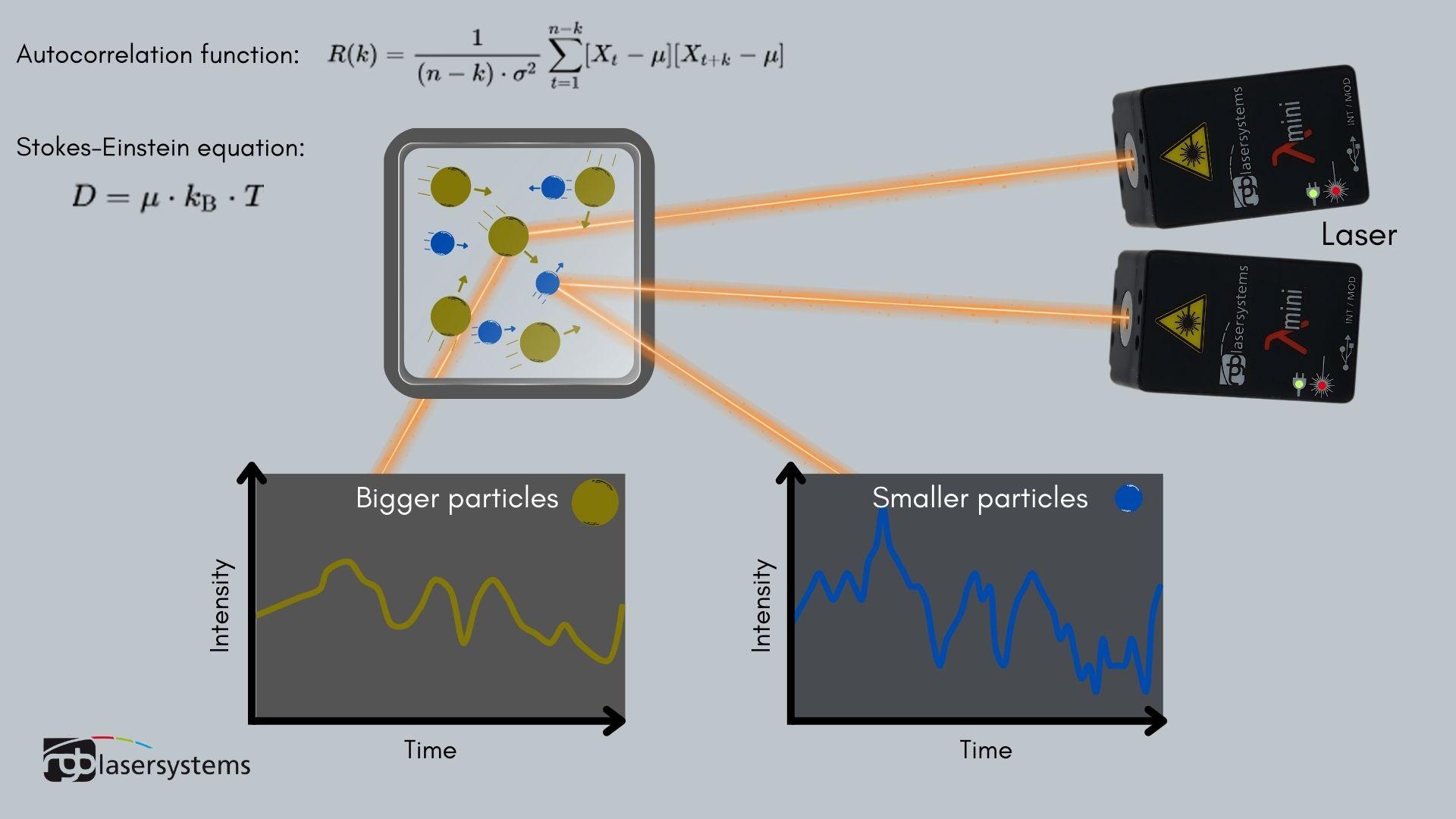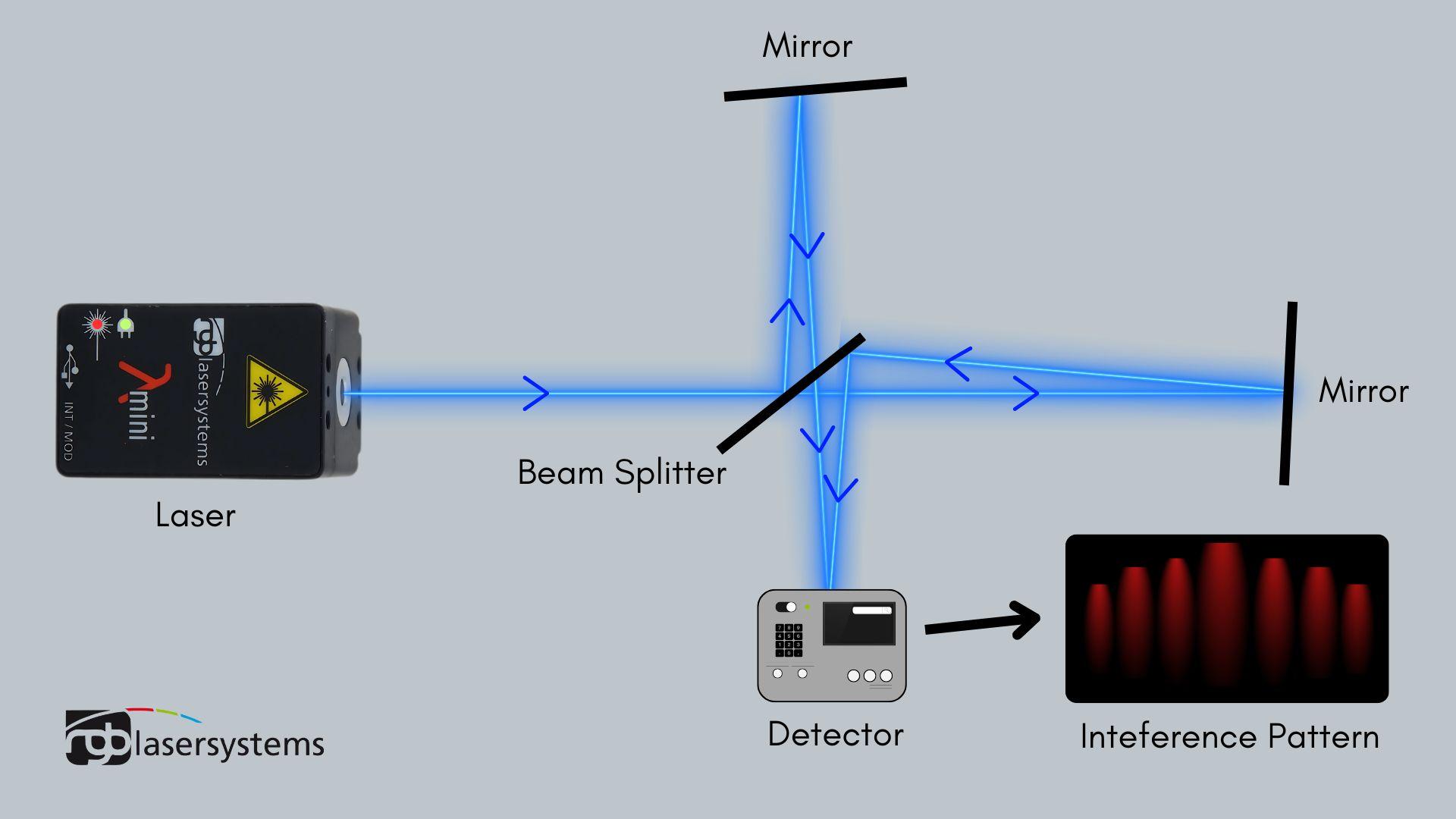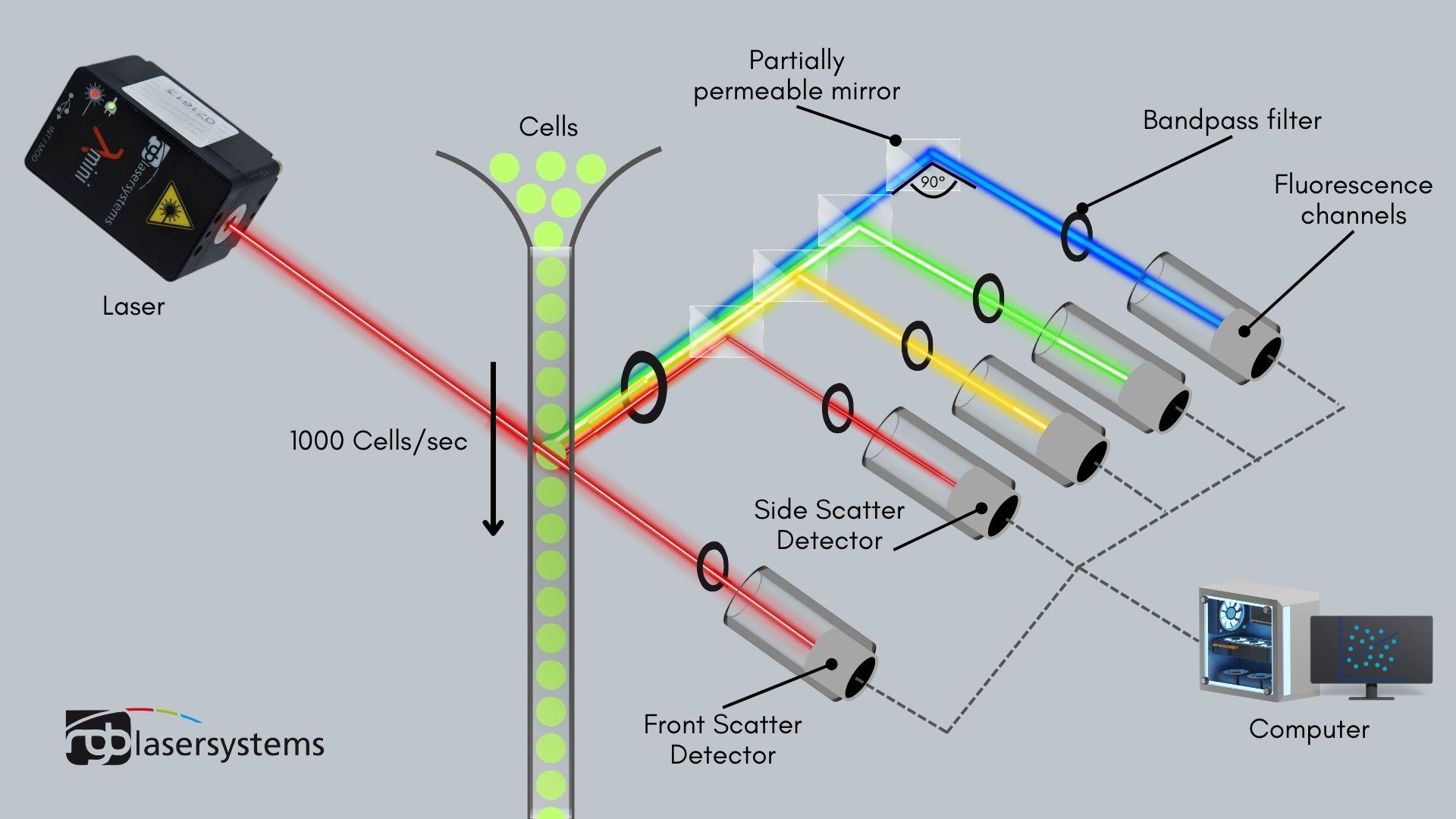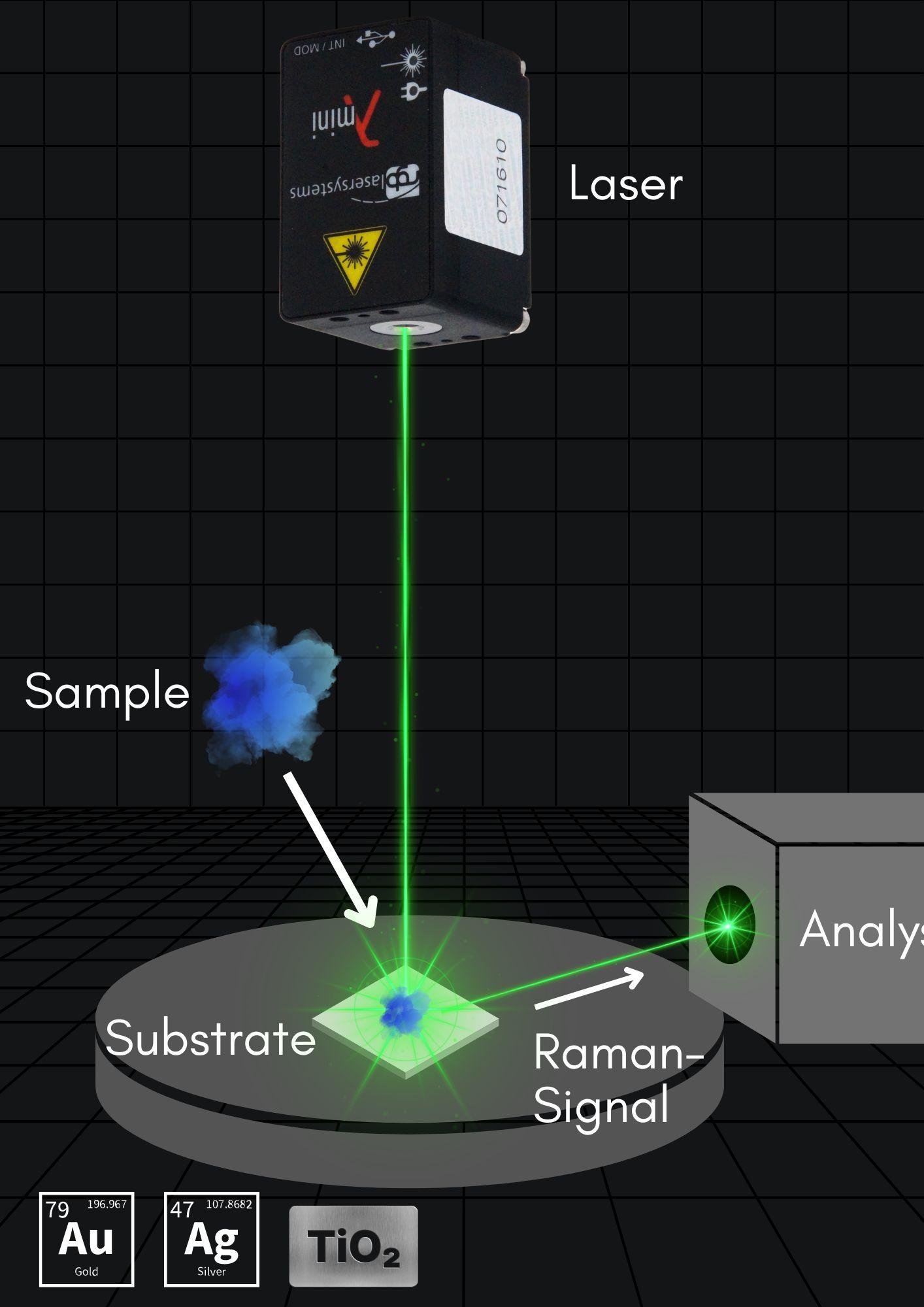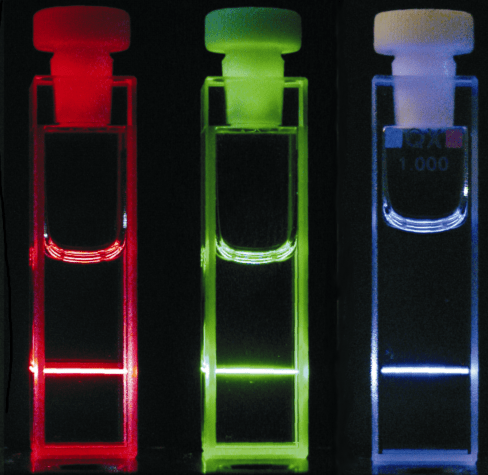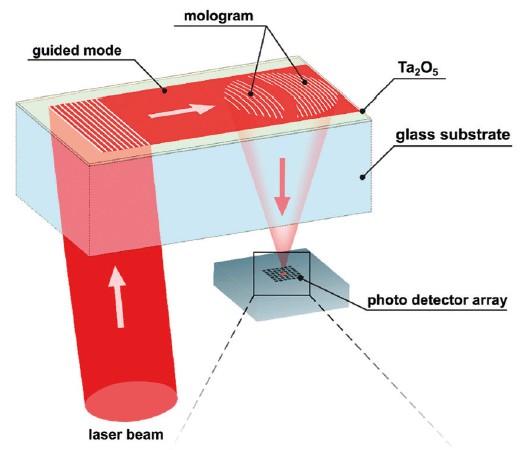Laser World of Photonics 2025 Munich
RGB Lasersystems GmbH exhibited again at this year’s Laser World of Photonics in Munich. Together with our partner Avenir Photonics, represented by Jörg Ehehalt and Anna Dietzel, we presented our laser systems and met many long-term partners and distributors. The exchange of ideas and new opportunities made the fair a great success.
We thank everyone who visited us and look forward to continuing these inspiring conversations.
Asia Photonics Expo 2025 Singapore
For the first time, we are participating in the Asia Photonics Exhibition in Singapore, and we are very pleased with our experience. We were able to establish new contacts and engage with our existing customers. Many thanks again to Dennis Wee from Laser 21, our distributor in Singapore.
New product: Lamda Beam Pigtailed
The Lambda Beam pigtailed offers output powers up to 300mW. With a broad selection of wavelengths from 405nm to 1550nm that are fine-tunable, you can achieve the perfect wavelength tailored to your specific needs.
It is temperature-stabilized, ensuring consistent performance and reliability in diverse environments. We offer single-mode, multi-mode and polarization-maintaining options, allowing you to customize your system for optimal results. Additionally, we have a VHG-stabilized 785nm system available, providing an wavelength-stabilized outcome.
Spie Photonics West’24 San Francisco
In collaboration with Dr. Jörg Ehehalt from Avenir Photonics, our offer of products was showcased at Spie Photonics West in San Francisco. We met many customers as well as new people who are interested in our company and our developments.
RGB visited Spie Photonics West the 8th time now and it was as nice as always. See you in the next Year!
OPIE’23 Yokohama
RGB visited OPIE 2023 in Yokohama for the first time.
At the booth of the German Pavilion we showed our laser systems with accessories. It was important for me to have a closer exchange with our partners MSH Systems and Tokyo Instruments and to get to know new customers and opportunities.
My daughter (responsible for marketing) and I were very taken with the exuberant hospitality and extreme helpfulness. Thank you very much for that.
We will be back in the land of the rising sun.
Following applications also here on Linkedin
Optical Tweezers
What if you could hold and rotate a living cell using nothing but light?
Optical tweezers make that possible. By tightly focusing a low-power infrared laser (<1 W, typically 1064 nm), researchers can create a light-based force field that traps and manipulates microscopic objects like cells, bacteria, or even single molecules – entirely without physical contact.
How it works:
The laser creates a steep intensity gradient that pulls small particles into the beam’s waist. Using dual beams or beam shaping, it’s even possible to rotate objects in 3D.
Why rotate a cell?
Because in cell biomechanics, drug delivery research, or 3D imaging, orientation matters. Scientists need to examine how a cell behaves when force or stimuli are applied from specific directions – revealing things that static views would miss.This breakthrough was so impactful that it earned a Nobel Prize in Physics in 2018 – proving how a simple beam of light can act as a precise tool for biological manipulation.
Confocal microscopy
A confocal microscope is a special light microscope that can be used to produce very accurate images of samples. The following graphic shows the schematic body of such a measurement. Laser beams are sent through an excitation pinhole or glass fibers, which reach the sample through various lenses via the microscope stand. The objective directs the two beam paths to a common exposure point, which means that both the illumination point and the excitation pinhole are in focus at the same time (confocal to each other). Due to fluorescence, the laser beams travel from the sample via lenses to a detector, which can generate an overall image from many individual measurements. You can imagine that the sample is not “photographed” as a whole, but that many individual images are taken in a raster-like manner, which can be made into an overall image using software. This works by moving the microscope stand and, more precisely, the mirror in the x and y directions until all areas have been photographed. Confocal microscopy allows cells or tissue, for example, to be viewed in high resolution and detail
Dynamic light scattering/photocorrelation spectroscopy
This is a measuring method that can be used to determine the hydrodynamic radius of particles.
When particles (e.g. proteins) are radiated by a laser light, which is coherent and monochromatic, it is scattered in all directions.
With the help of an interferometer, the distance between centers from which the scattered light originates (so-called scattering centers), i.e. the distance between particles, can be determined.
As the distances between the particles are constantly changing due to Brownian molecular motion (random movements of molecules/particles in a fluid state), interference occurs which leads to fluctuations (changes in scattering intensity). The diagram shows what such fluctuations look like graphically for large/small particles. The interference can now be used to determine the speed of the particles and the so-called diffusion coefficient. The autocorrelation function can be used to calculate particle parameters, which can be used to determine the hydrodynamic radius of the particles using the Stokes-Einstein equation. These results can be used to indirectly determine the molar mass of the measured particles.
Michelson Interferometer
The Michelson interferometer is an interferometer named after the physicist Albert A. Michelson.
The Michelson interferometer utilizes the phenomenon of interference, which can only be observed with coherent light, for example that of a laser.
The graphic illustrates the basic structure of the Michelson interferometer. An interferometer splits a light wave into two parts. These two waves then travel different distances with different propagation times. When they meet, interference occurs.
If the optical path length of one of the two waves is changed, e.g. by moving one of the two mirrors, the phases of the two waves are shifted against each other and thus the interference pattern changes.
By measuring the intensity of the resulting wave, even the smallest changes in the path difference between the two waves can be measured.
One example of an application is the measurement of the thermal expansion of materials. Using the Michelson interferometer, even the slightest expansion can be detected, making the measurement extremely accurate.
Have you ever heard of flow cyometry?
This is a measurement method for the qualitative and quantitative analysis of cells. It starts with cells being sucked into a fluidic system at high speed. The more than 1000 cells per second are shot individually through the laser beam and emit fluorescence depending on their individual characteristics. With different wavelengths (red, yellow, green, blue…) the following different information can be obtained. The forward scatter detector is a measure of the diffraction of the light, which can be used to determine the volume of the cell. The side scatter detector is a measure of the refraction of light at right angles, which can be used to determine the size and structure of the cell nucleus, the number of vesicles and the granularity of the cell. Using a so-called FACS- (Flourescence-activated Cell Sorting) device, the cells can then be separated according to their characteristics.
One example of an application of flow cyometry is the separation of sperm cells with sex chromosome X and those with chromosome Y in order to determine the sex of an embryo created by in vitro fertilisation.
Developments in Raman Spectroscopy
Until now, expensive and often unreliable methods such as the SERS- (surface-enhanced Raman scattering) method have been used for ultrasensitive analyses.
A research team from the field of materials science has succeeded in developing a method that should increase performance 50-fold.
A Raman measurement works as shown simplified in the picture. The laser plays a decisive role here, as does the substrate onto which the sample gets placed on.
The team has developed a substrate made of different materials with different characteristics, which together can have a positive effect.
For example, it contains four plasmonic nanostructures, including gold and silver particles, which generate a light-matter interaction.
These interactions are also known as plasmonic effects. Combined with a photocatalytic titanium-oxide-layer to cause a photocatalytic effect, the RAMAN signal is intensified by a factor of 50.
This ensures that the sample can be analysed much more precisely and quickly.
A special feature of the substrate is that it can be cleaned using UV light and can be used up to 20 times, which reduces costs immensely.
Energy Transfer Upconversion (ETU)


